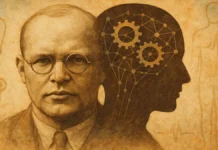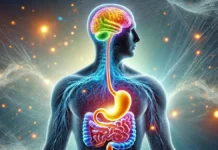Introduction
In the realm of osteopathy, miracles often describe those remarkable recoveries where patients experience significant relief from chronic pain, restored mobility, or enhanced well-being after treatment—despite having little success with other forms of therapy. These extraordinary outcomes can seem almost miraculous to both patients and practitioners, raising intriguing questions about their underlying causes.
Is it fate, belief, or something else that creates these remarkable recoveries? The concept of fate suggests a predetermined path, where certain individuals are destined to find healing through osteopathy. This viewpoint leans on the idea that some outcomes are meant to be, irrespective of the actions taken. However, attributing recoveries purely to fate overlooks the tangible elements at play, such as the practitioner’s expertise and the patient’s engagement in their healing journey. Belief, on the other hand, is a potent force in any healing process. The placebo effect—wherein a patient’s condition improves due to their belief in a treatment’s efficacy—is well-documented. In osteopathy, a patient’s belief in the practitioner’s ability and the treatment’s potential can significantly influence their recovery, enhancing the body’s natural healing processes and making the treatments appear more effective. This psychological aspect underscores the mind-body connection, which is a crucial component of the healing journey. However, beyond fate and belief, the science and practice of osteopathy are fundamental to these remarkable recoveries. Osteopaths use a holistic approach to diagnose and treat patients, focusing on the musculoskeletal system and emphasizing the body’s ability to self-heal. Techniques such as spinal manipulation, massage, and other hands-on methods aim to improve blood flow, reduce pain, and enhance mobility, supported by anatomical and physiological principles. Skilled practitioners, through their knowledge and experience, can identify and correct dysfunctions in the body that other forms of treatment may have overlooked.
Therefore, while the notion of fate and the power of belief are compelling narratives, the “miracles” seen in osteopathy are more likely the result of a combination of the practitioner’s skill, the patient’s belief in the treatment, and the body’s natural healing ability. These elements work together to create outcomes that can indeed feel miraculous, illustrating the holistic and integrative nature of osteopathic medicine. This holistic approach, blending scientific understanding, patient engagement, and the intrinsic healing potential of the body, offers a comprehensive explanation for the seemingly miraculous recoveries observed in osteopathy.
The Role of Imagination in Healing
The power of imagination, often underestimated, plays a significant role in influencing physical health and facilitating the healing process. Imagination can activate physiological responses in the body, demonstrating the profound mind-body connection that exists. This connection underscores how mental and emotional states can impact physical well-being.
One of the primary ways imagination influences health is through the placebo effect. Numerous studies have documented how patients experience real, measurable improvements in their conditions when they believe they are receiving effective treatment, even if the treatment is inert. For example, a study published in the New England Journal of Medicine found that patients with knee osteoarthritis who underwent placebo surgery reported pain relief and improved function comparable to those who had actual surgery. This phenomenon highlights how the belief in treatment’s efficacy, powered by the imagination, can trigger the body’s healing mechanisms.
Visualization techniques further illustrate the impact of imagination on health. Athletes often use mental imagery to enhance performance, visualizing successful execution of skills to improve actual physical outcomes. Similarly, patients can use guided imagery—a technique where individuals imagine themselves in a peaceful setting or envision their bodies healing—to manage pain and reduce stress. Research has shown that guided imagery can help reduce pain in patients with conditions such as fibromyalgia and cancer. A study in the Journal of Pain and Symptom Management reported that cancer patients who practiced guided imagery experienced significant reductions in pain and anxiety compared to those who did not.
The concept of psychoneuroimmunology (PNI) explores how the mind’s influence can extend to the immune system. Studies in this field have demonstrated that positive mental states, often fostered by imaginative practices like meditation and positive visualization, can enhance immune function. For instance, a study published in Psychological Science found that individuals who engaged in positive visualization exercises had increased levels of immunoglobulin A, an antibody that plays a critical role in immune function.
Moreover, the use of imagination in therapies such as hypnotherapy further supports the mind-body connection. Hypnotherapy leverages the power of suggestion and imagination to alter perceptions and behaviors, providing relief from various psychological and physical conditions. For example, a meta-analysis published in the International Journal of Clinical and Experimental Hypnosis found that hypnotherapy was effective in reducing chronic pain, anxiety, and depression, highlighting how imaginative engagement can lead to tangible health benefits.
In summary, the power of imagination significantly influences physical health through mechanisms such as the placebo effect, visualization techniques, and the principles of psychoneuroimmunology. These examples underscore the importance of integrating imaginative practices into healthcare to harness the full potential of the mind-body connection in promoting healing and well-being.
Belief and Its Impact on Recovery
Belief in one’s ability to heal plays a crucial role in the recovery process, often influencing outcomes in significant ways. This belief can be a powerful force, affecting both mental and physical health through various mechanisms.
The Power of Belief
Belief in healing, also known as self-efficacy, can influence recovery by shaping attitudes and behaviors that promote health. Studies have shown that individuals who believe they can recover from illness are more likely to engage in healthy behaviors, adhere to treatment plans, and persevere through challenges. This positive mindset can lead to better overall health outcomes and faster recovery times.
Patient Stories and Testimonials
Patient stories and testimonials provide compelling evidence of the impact of belief on recovery:
1. The Story of Mary
Mary was diagnosed with multiple sclerosis (MS), a chronic condition with no known cure. Despite the challenges, Mary remained optimistic and believed in the power of her body to heal. She diligently followed her treatment plan, which included medication, physical therapy, and dietary changes. Over time, Mary’s symptoms improved, and her neurologist noted that her condition had stabilized. Mary attributed much of her progress to her belief in the treatments and her body’s ability to respond positively to them.
2. John’s Experience with Cancer
John was diagnosed with stage 3 colon cancer and underwent surgery followed by chemotherapy. Throughout his treatment, John maintained a positive attitude and believed strongly in his body’s ability to heal. He visualized the chemotherapy drugs targeting and destroying cancer cells, and he engaged in relaxation techniques to reduce stress. John’s oncologist noted that he responded exceptionally well to treatment, experiencing fewer side effects than expected and achieving remission earlier than anticipated. John firmly believes that his belief in the treatment and his body’s resilience played a significant role in his recovery.
3. Sarah’s Journey with Chronic Pain
Sarah suffered from chronic back pain for several years, despite trying various treatments with limited success. Frustrated and losing hope, Sarah decided to try osteopathic treatment, where she met a practitioner who emphasized the importance of belief in the healing process. Sarah committed herself to the treatment plan and adopted a positive mindset, believing that she could overcome her pain. Within a few months of treatment, Sarah’s pain significantly decreased, and she regained her mobility. Her osteopath credits her belief in the treatment and her body’s capacity to heal for the remarkable progress she made.
The Concept of Fate in Healing
Definition of “Fate” in the Context of Health and Recovery
“Fate” in the context of health and recovery refers to the idea that certain events, including illnesses and their outcomes, are predetermined or inevitable. It implies that an individual’s health condition and the course of their recovery are governed by forces beyond their control, often seen as part of a larger cosmic or divine plan. Fate suggests that specific health outcomes are preordained and cannot be altered by human actions or interventions alone.
Philosophical Perspectives on Fate and Healing
Philosophically, fate has been viewed differently across cultures and throughout history:
1. Western Philosophical Perspectives:
- Ancient Greek and Roman Philosophy: In ancient Greece and Rome, fate was often personified as Moira or Fortuna, representing a destiny that humans were subject to, whether they liked it or not. This concept influenced early medical thought, where diseases and their outcomes were seen as part of a person’s fate.
- Christian Philosophy: In Christian philosophy, fate is often aligned with God’s will or divine providence. Illness and recovery are seen as part of God’s plan for an individual’s life, and healing is believed to come from divine intervention or through the hands of healers acting as instruments of God’s will.
2. Eastern Philosophical Perspectives:
- Buddhist and Hindu Thought: In Buddhist and Hindu traditions, the concept of fate is often linked with karma, the law of cause and effect. Illness and health outcomes are seen as a result of past actions, with the potential for healing dependent on current actions and spiritual practices aimed at balancing karma.
- Chinese Philosophy (Daoism): In Daoist thought, fate is seen as part of the natural order, influenced by the interaction of yin and yang forces. Illness is viewed as an imbalance in these forces, with healing achieved through restoring harmony.
Cultural Perspectives on Fate and Healing
Culturally, perspectives on fate and healing vary widely:
1. Western Cultures:
- In Western cultures, particularly in modern times, the emphasis is often on individual agency and medical interventions. While some may see illness as a part of fate, the focus is more on medical treatments and scientific explanations for health outcomes.
2. Eastern and Traditional Cultures:
- In many Eastern and traditional cultures, such as those in Asia and Africa, there is often a stronger belief in fate and destiny. Illness and recovery are sometimes attributed to spiritual factors, ancestral influences, or the will of higher powers.
3. Indigenous Cultures:
- Indigenous cultures around the world often integrate elements of fate and spirituality into their healing practices. Illness may be seen as a result of disruptions in the natural or spiritual order, with healing rituals designed to restore balance and harmony.
Osteopathy’s Role in Facilitating Miracles
Osteopathy, as a holistic healthcare discipline, aligns remarkably well with the concepts of imagination, belief, and fate. By integrating these elements into its practice, osteopathy facilitates outcomes that can often seem miraculous to both patients and practitioners.
Alignment with Imagination
Osteopathic principles recognize the power of the mind-body connection. Imagination, particularly through visualization and mental imagery, is a vital component in this connection. Osteopaths often encourage patients to engage in positive visualization techniques to complement their physical treatments. For instance, patients might be guided to imagine the alignment of their spine or the relaxation of tight muscles during treatment. This use of imagination can enhance the effectiveness of osteopathic techniques by promoting relaxation, reducing stress, and fostering a positive healing environment.
Visualization and Healing
The practice of visualization involves creating mental images to influence physical states. In osteopathy, this can be an integral part of the healing process. When patients visualize the desired outcome of their treatment, such as reduced pain or improved mobility, they can experience physiological changes that support their healing. This mental imagery can trigger the body’s relaxation response, decrease muscle tension, and reduce the perception of pain.
Case Example: Imagining Alignment
Consider a patient with chronic back pain. An osteopath might guide this patient to visualize their spine in perfect alignment while receiving manual adjustments. By imagining the vertebrae moving smoothly into place, the patient can help facilitate actual physical changes in their posture and alignment. This mental practice can make the osteopathic adjustments more effective by engaging the patient’s neuromuscular system in the process.
Stress Reduction and Mental Imagery
Stress is a common barrier to healing, and imagination can play a critical role in stress reduction. Osteopaths often incorporate guided imagery into their treatment plans to help patients manage stress. For example, a patient might be encouraged to visualize a peaceful, calming scene during a treatment session. This practice can lower cortisol levels, reduce blood pressure, and promote a state of relaxation that is conducive to healing.
Enhancing Patient Engagement
Using imagination in osteopathy also enhances patient engagement. When patients actively participate in their treatment through visualization, they feel more involved and invested in their recovery. This active participation can improve adherence to treatment plans and foster a sense of empowerment and control over their health outcomes.
The Power of Belief
Belief plays a crucial role in the efficacy of osteopathic treatment. Osteopaths work to build a strong therapeutic relationship with their patients, fostering trust and confidence in the treatment process. This trust enhances the patient’s belief in the efficacy of the treatment, which can amplify the healing process. The placebo effect, driven by belief, is well-documented and can lead to significant improvements in health outcomes. By creating a supportive and empathetic environment, osteopaths help patients harness the power of belief to aid in their recovery.
Building Trust and Confidence
One of the foundational elements in osteopathy is the therapeutic relationship between the practitioner and the patient. Osteopaths spend significant time understanding their patients’ histories, concerns, and goals. This thorough and personalized approach helps build trust and rapport. When patients feel heard and understood, they are more likely to trust their osteopath and believe in the treatment plan. This trust is crucial as it fosters a positive mindset, which can significantly influence treatment outcomes.
The Placebo Effect
The placebo effect illustrates how belief in a treatment’s efficacy can lead to real, measurable improvements in health. This effect is not merely psychological but has been shown to trigger actual physiological changes in the body. For example, patients given a placebo for pain management have reported significant pain relief, accompanied by measurable changes in brain activity. In osteopathy, the belief in the treatment and the practitioner’s skills can similarly trigger the body’s natural healing processes, enhancing the overall effectiveness of the intervention.
Creating a Supportive Environment
Osteopaths strive to create a supportive and empathetic environment, which is essential for fostering belief and confidence in treatment. This involves active listening, providing reassurance, and maintaining a compassionate approach. Such an environment not only makes patients feel comfortable and cared for but also reinforces their belief in the treatment. When patients believe that their osteopath is dedicated to their well-being and that the treatment will be effective, their bodies are more likely to respond positively.
Empowering Patients
Empowerment is another critical aspect of harnessing the power of belief. Osteopaths encourage patients to take an active role in their healing process, which includes understanding their condition, engaging in prescribed exercises, and adopting healthier lifestyle choices. When patients are actively involved and understand the rationale behind their treatment, their belief in their ability to recover strengthens. This empowerment boosts their confidence and adherence to the treatment plan, further enhancing the healing process.
Psychological and Emotional Benefits
Belief in treatment also provides significant psychological and emotional benefits. It can reduce anxiety and stress, which are known to negatively impact health and hinder recovery. A positive mental state, fostered by belief, can improve overall well-being and resilience, making the body more receptive to healing. Osteopaths often incorporate techniques such as mindfulness and relaxation exercises to support this positive mental state, reinforcing the belief in a successful outcome.
The Concept of Fate
Osteopathy also acknowledges the concept of fate, albeit in a nuanced way. While osteopathic practitioners do not typically frame health outcomes as predestined, they do recognize the complex interplay of various factors—genetic, environmental, and psychological—that contribute to a patient’s health. This perspective can be seen as aligning with the broader understanding of fate, where various predetermined elements influence the course of an individual’s life and health. Osteopaths address these factors comprehensively, tailoring treatments to the unique circumstances and histories of each patient.
The Importance of a Holistic Approach
The holistic approach is a cornerstone of osteopathy, emphasizing the interconnection between the body’s structure and function, and the body’s intrinsic ability to heal itself. This approach is inherently aligned with the concepts of imagination, belief, and fate:
List
- Whole-Person Care: Osteopathy treats the patient as a whole, rather than focusing solely on specific symptoms. This involves considering physical, emotional, and psychological aspects of health, which resonates with the holistic nature of imagination and belief.
- Patient-Centered Practice: Osteopaths engage patients in their own healing process, empowering them to take an active role. This empowerment is crucial in fostering belief and positive expectations, which can significantly enhance treatment outcomes.
- Self-Healing Mechanisms: Osteopathic treatments aim to support and stimulate the body’s natural self-healing mechanisms. By optimizing the body’s structure and function, osteopaths facilitate an environment where the body can heal itself, aligning with the idea that healing is a natural, perhaps even fated, process.
- Integration of Techniques: Osteopathy employs a variety of techniques, including manual therapy, lifestyle advice, and stress management, to address the whole person. This integrative approach ensures that all aspects of a patient’s well-being are considered, promoting a comprehensive path to recovery.
- Preventive Care: A holistic approach in osteopathy also emphasizes preventive care. By focusing on maintaining optimal health and preventing illness, osteopaths help patients avoid future health issues. This proactive stance aligns with the idea that fostering good health is as important as treating illness.
- Personalized Treatment Plans: Each patient receives a personalized treatment plan that addresses their unique needs and circumstances. This customization ensures that treatments are specific and relevant, enhancing their effectiveness. Personalized care also helps build trust and rapport between the patient and practitioner.
- Emphasis on Lifestyle: Osteopathy recognizes the significant impact of lifestyle on health. Osteopaths often provide guidance on nutrition, exercise, sleep, and stress management, helping patients make positive changes that support their overall health and recovery.
- Mind-Body Connection: The holistic approach in osteopathy deeply respects the mind-body connection. Techniques such as mindfulness, relaxation exercises, and mental imagery are integrated into treatment plans to support mental and emotional well-being, which in turn supports physical health.
- Collaborative Care: Osteopaths often work collaboratively with other healthcare providers to ensure comprehensive care. This interdisciplinary approach ensures that patients receive the best possible treatment from various perspectives, enhancing overall outcomes.
- Continuous Education and Adaptation: Osteopaths continually update their knowledge and skills to provide the best possible care. This commitment to ongoing education and adaptation ensures that patients benefit from the latest advances in osteopathic medicine and holistic health practices.
Conclusion
In this blog, we explored the intricate interplay between imagination, belief, and fate in the context of osteopathic healing. We discussed how the power of imagination can enhance the effectiveness of osteopathic treatments by promoting relaxation, reducing stress, and fostering a positive healing environment. We also delved into the significant role of belief in the healing process, highlighting how trust and confidence in osteopathic treatment can amplify its efficacy through mechanisms like the placebo effect. Additionally, we examined the concept of fate, considering various philosophical and cultural perspectives on its role in health and recovery, and how osteopathy aligns with these ideas through its holistic approach.
While fate and belief are powerful elements that can influence healing, osteopathy provides a tangible, science-based approach to achieving these seemingly miraculous recoveries. Osteopathy’s holistic principles, patient-centered practice, and emphasis on the mind-body connection create an environment conducive to natural healing. By addressing the whole person and integrating a variety of techniques, osteopathy supports the body’s intrinsic ability to heal itself.
We encourage readers to keep an open mind and believe in their body’s ability to heal. With the support of osteopathy, patients can harness the power of imagination, belief, and a comprehensive, science-based approach to achieve remarkable health outcomes. Embrace the journey towards well-being with confidence in the holistic and effective practices of osteopathy.






















